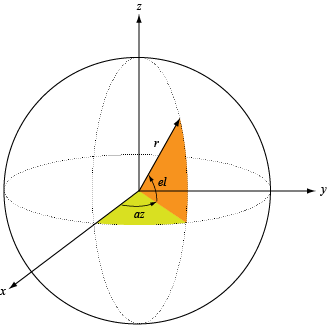patternAzimuth
Syntax
Description
patternAzimuth(
plots the 2-D array directivity pattern versus azimuth (in dBi) for the
array,FREQ)array at zero degrees elevation angle. The argument
FREQ specifies the operating frequency.
The integration used when computing array directivity has a minimum sampling grid of 0.1 degrees. If an array pattern has a beamwidth smaller than this, the directivity value will be inaccurate.
patternAzimuth(
plots the array pattern with additional options specified by one or more
array,FREQ,EL,Name,Value)Name,Value pair arguments.
Input Arguments
Name-Value Arguments
Output Arguments
More About
Version History
Introduced in R2021a
